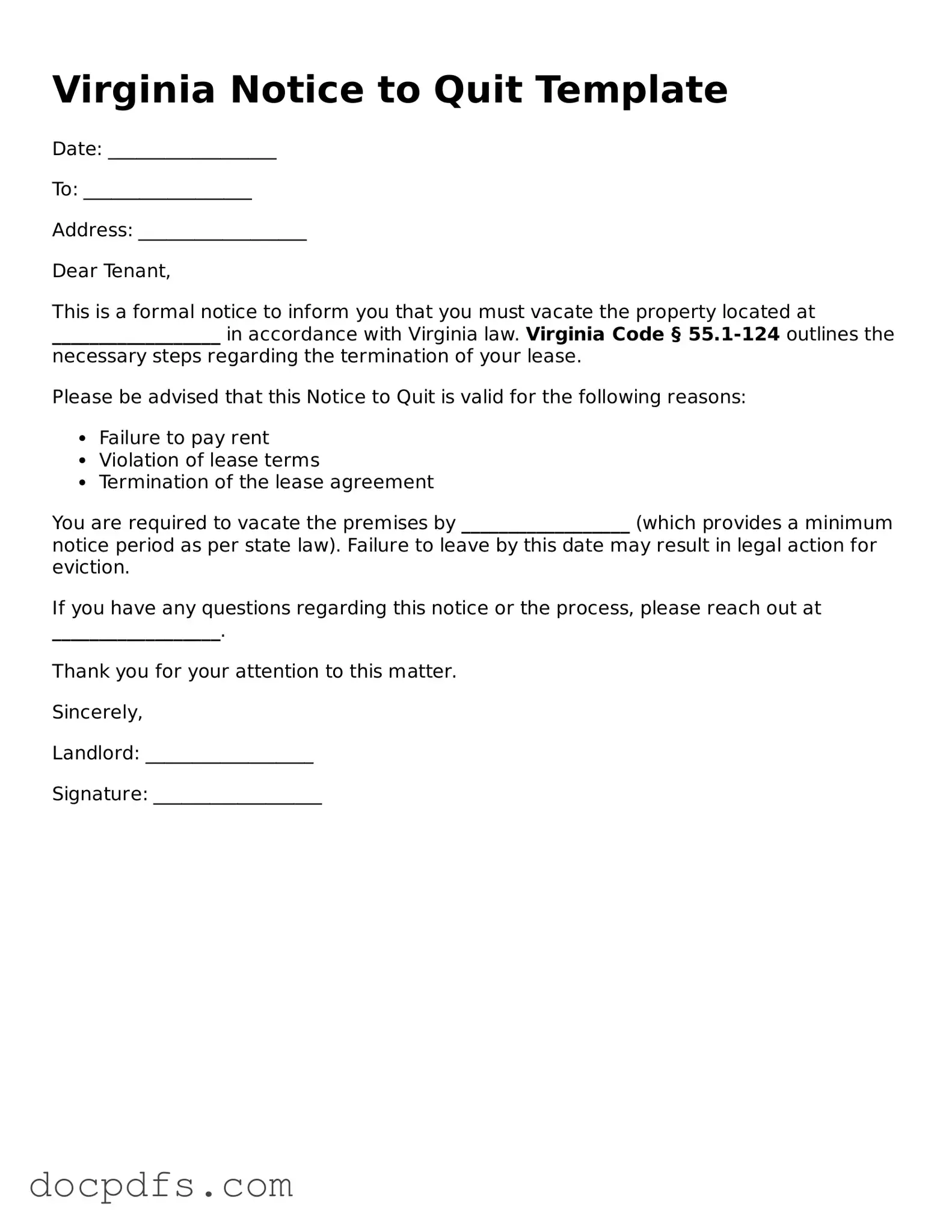The Virginia Notice to Quit form is a legal document used by landlords to inform tenants that they must vacate the rental property. This notice is typically issued when a tenant has violated the lease agreement or has not paid rent. It serves as a formal request for the tenant to leave the premises by a specified date.
When should a landlord use a Notice to Quit?
A landlord should use a Notice to Quit in several situations, including:
-
Failure to pay rent.
-
Violation of lease terms, such as unauthorized pets or excessive noise.
-
Engaging in illegal activities on the property.
It is essential to follow the proper procedures to avoid complications during the eviction process.
How much notice must be given to the tenant?
The amount of notice required varies depending on the reason for the eviction. Generally, landlords must provide:
-
5 days for non-payment of rent.
-
30 days for lease violations.
Always check local laws to ensure compliance with specific requirements.
Can a tenant contest a Notice to Quit?
Yes, a tenant can contest a Notice to Quit. If they believe the notice is unjust or incorrect, they may respond to the landlord in writing. Additionally, tenants can present their case in court if the landlord pursues eviction.
What happens if the tenant does not leave by the deadline?
If the tenant does not vacate the property by the deadline stated in the Notice to Quit, the landlord may file for eviction in court. This process involves legal proceedings where both parties can present their arguments.
Is a Notice to Quit the same as an eviction notice?
No, a Notice to Quit is not the same as an eviction notice. The Notice to Quit is the first step in the eviction process, serving as a warning. An eviction notice is issued after the Notice to Quit, typically after a court order has been obtained.
Do I need to provide a reason for the Notice to Quit?
Yes, it is important to provide a clear reason for issuing a Notice to Quit. This helps the tenant understand why they are being asked to leave and can prevent misunderstandings or disputes later on.
A Virginia Notice to Quit form can be obtained from various sources, including:
-
Local courthouse.
-
Online legal document providers.
-
Real estate or landlord-tenant associations.
Ensure that the form you use complies with Virginia state laws.
